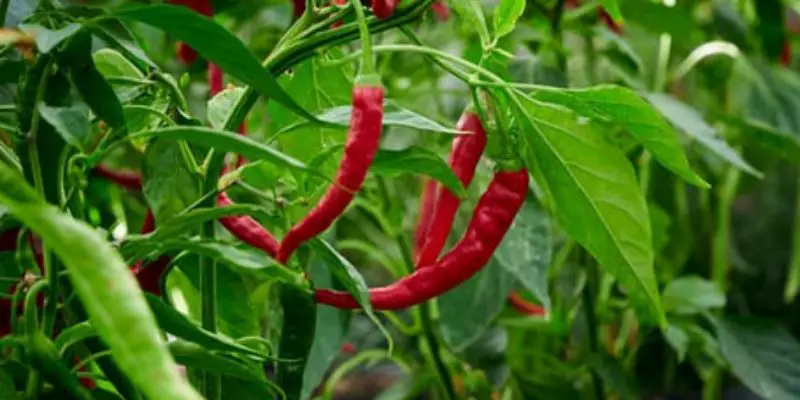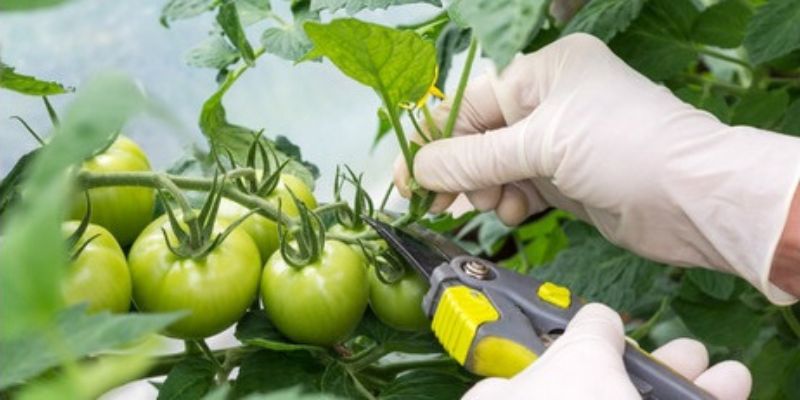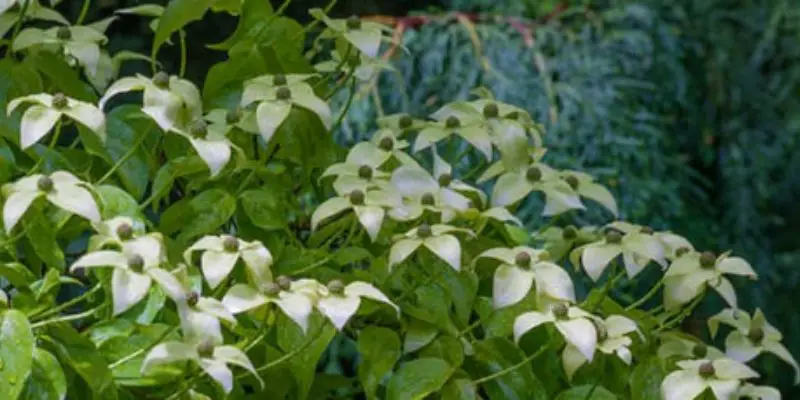Growing peppers can be a rewarding experience. With the right care, your plants will produce an abundant harvest year after year. An important part of pepper plant maintenance is proper pruning. Pruning pepper plants encourages more vigorous growth, improves air circulation and light exposure, and results in higher yields. This comprehensive guide will teach you everything you need to know about how to prune peppers effectively.
Why Prune Pepper Plants?
There are several key reasons why pruning is beneficial for pepper plants:
1. Increases Air Circulation
Removing excess foliage allows air to move freely through the plant, decreasing humidity and the risk of disease. Good airflow also dries leaves faster after rain or watering.
2. Improves Light Penetration
Pruning creates more space between branches and exposes inner leaves to sunlight. This is critical for photosynthesis and fruit production.
3. Redirects Energy
When you prune pepper plants, they redirect energy previously used for foliage growth into developing peppers instead.
4. Encourages Fruit Production
Peppers grow best when the plant can focus resources on existing peppers rather than continued leaf and stem growth.
5. Manages Plant Size
Pruning contains unruly pepper plants, keeping them a more manageable size for your space. It also prevents overcrowding when grown close together.
When to Prune Pepper Plants
Timing is an important factor for effective pepper pruning:
Young Seedlings – Prune young plants to one main stem by pinching off all side shoots. This encourages plants to grow upwards and establish a strong central leader early on.
Spring – Early in the growing season after transplanting, prune off any branches or shoots below the first set of flower buds. This allows the plant to focus on developing those early fruits.
Mid Summer – During peak growing season, prune plants to open up the centers, increase light and airflow, and remove any diseased/damaged growth.
Fall – As plants wrap up fruit production for the season, cut back stems and remove old growth to prepare for winter dormancy.
Avoid pruning within 2-3 weeks of transplanting or during flowering, as this can shock the plant.
What to Prune on a Pepper Plant
When pruning peppers, you’ll want to remove:
- Dead or dying leaves, stems, and branches
- Crowded inner growth that doesn’t receive light
- Unhealthy, weak, or broken limbs
- Diseased or insect-damaged vegetation
- Dense foliage blocking air circulation
- Secondary shoots and suckers
- Spent fruits/flowers
Aim to open up the center of plants while retaining healthy, productive outer branches with leaf nodes and flowers. Selective pruning directs energy into the parts of the plant you want to keep.
How to Prune Peppers
Here is a step-by-step guide for pruning pepper plants in your garden:
1. Sterilize Pruning Shears
Disinfect your pruning tool blades with rubbing alcohol to prevent transmitting diseases between plants.
2. Remove Suckers & Shoots
Early on, pinch off any suckers (offshoots) and secondary shoots to shape young plants.
3. Take Out Middle Growth
Cut away overlapping inner branches and leaves not receiving ample sunlight.
4. Prune Damaged Areas
Clip off discolored, wilted, curled, or insect-eaten portions of the plant.
5. Shape Remaining Growth
Retain healthy, vigorous branches with leaf nodes and flowers. Cut back long, leggy stems.
6. Clean Up Lower Leaves
Remove old leaves and stems within 6-12 inches of the soil to prevent disease.
7. Disinfect Tools Again
Reapply rubbing alcohol to pruning shears before moving to another plant.
8. Monitor Progress
Observe plant growth and fruiting after pruning. Repeat as needed through the season.
Tip: Always make pruning cuts just above a leaf node or branch intersection, at a 45 degree angle away from buds. This encourages new growth. Avoid chopping off the growing tips.
Ideal Pepper Plant Shape
With proper pruning techniques, your pepper plants will take on an ideal shape:
- Central leader stem with strong scaffold branches in a “V” shape
- Leaves concentrated on the outer 1/3 of the plant
- Interior space open to sunlight and air circulation
- Ferny foliage near fruiting zones for photosynthesis
- Height limited to a manageable size for your garden
Pruning promotes a compact, focused pepper plant that puts energy into fruit production rather than excessive leaf and stem growth.
Pruning Methods for Different Pepper Types
Adjust your pruning strategy based on the natural growth habit of the pepper variety:
Bush Types – Remove interior shoots, limit height. Determinate/Compact – Prune suckers and interior branches. Vining – Prune excessive foliage, shape vines. Tree-Like – Clear inner branches, top plants.
Match pruning to the plant’s natural tendencies for best results. Go easy on ultra-compact peppers.
Common Problems Pruning Helps Avoid
Here are some common issues that arise from not pruning pepper plants:
- Leggy, weak growth from lack of sunlight
- Clogged centers with poor air flow
- Crowding, increasing disease risk
- Excessive foliage slowed by lack of energy
- Unmanaged height/width
- Low productivity from too many fruits
Consistent pruning vastly improves the health and fruit productivity of pepper plants.
When NOT to Prune Peppers
As a rule, avoid pruning peppers at these times:
- Right after transplanting, before they establish
- During flowering or fruiting
- In very hot temperatures
- After late summer harvests
- Heading into winter
Pruning during critical growth stages can stress plants. Sheet mulching overwinter is better than cutting back.
Long-term Benefits of Proper Pruning
With regular pruning each season, pepper plants will:
- Mature faster and start setting fruits sooner
- Produce higher yields over a longer harvest window
- Maintain optimal health and vigor
- Recover quicker after environmental stresses
- Have an expanded lifespan over years
Pruning is an investment in your pepper plants’ sustained productivity.
Tips for Pruning Peppers Successfully
Follow these tips for the best results pruning pepper plants:
- Prune on a dry, sunny day to minimize disease risks
- Remove no more than 1/3 of foliage at a time
- Cut just above leaf nodes and buds, not into thick stems
- Work slowly and selectively rather than hacking blindly
- Spread pruned material in garden beds as mulch or compost
- Sterilize tools before each use to prevent spreading illness
- Fertilize after pruning to energize regrowth
With the right timing and technique, pruning pepper plants improves their health and productive lifespan. Don’t be afraid to give your peppers a trim!
Conclusion
Pruning is an essential pepper plant care task. Removing excess foliage improves light, airflow, directs energy into fruits, and manages size. Prune young plants to shape them, then maintain ideal structure. Target crowded inner branches and problem areas. Avoid shocking plants when flowering/fruiting. With regular pruning, pepper plants will produce higher yields and stay vigorous for years. Hopefully, you now know how to prune peppers like a pro.

Michael Glenn is a certified arborist and horticultural expert with over 15 years of experience in the landscape industry. His passion for plants and trees has led him to become a sought-after authority on pruning and trimming techniques. Glenn’s in-depth knowledge of proper pruning methods, timing, and tools has helped countless homeowners and professionals maintain healthy, aesthetically pleasing gardens and landscapes.
In addition to sharing his pruning expertise through practical tips, step-by-step guides, and expert advice, Glenn is also a respected author of pruning tool buying guides. His comprehensive reviews and comparisons ensure readers can make informed decisions when investing in quality loppers, pruning shears, saws, and other essential equipment. With a deep understanding of plant biology and sustainable practices, Glenn’s writing empowers audiences with the knowledge needed to properly care for green spaces.





